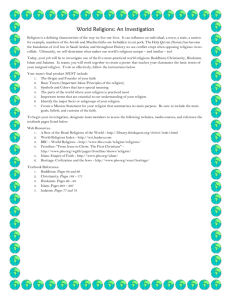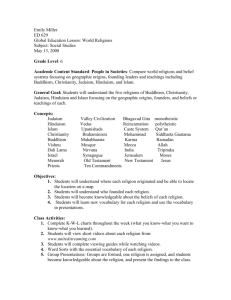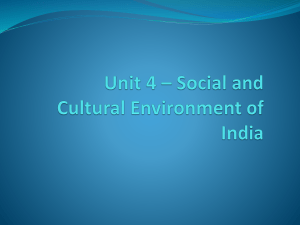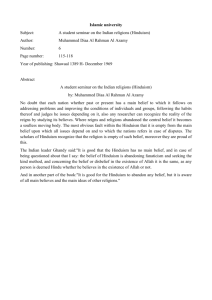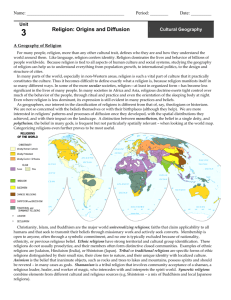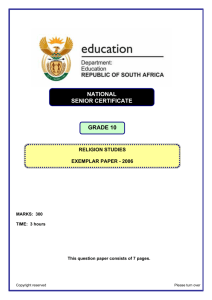Religion in India
advertisement
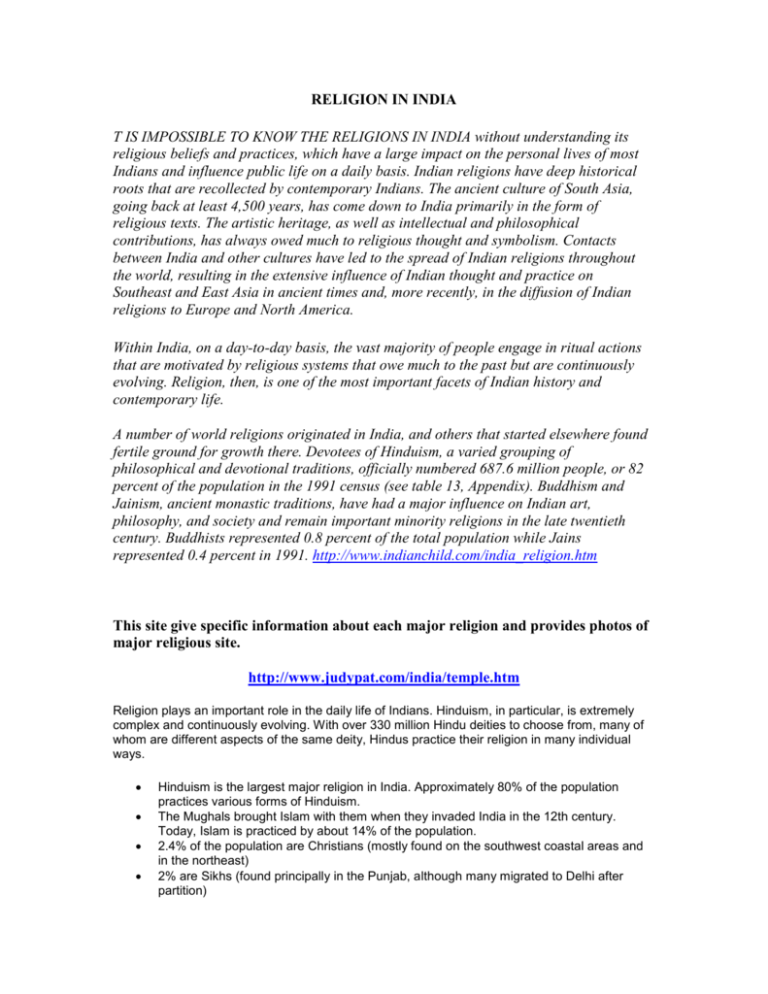
RELIGION IN INDIA T IS IMPOSSIBLE TO KNOW THE RELIGIONS IN INDIA without understanding its religious beliefs and practices, which have a large impact on the personal lives of most Indians and influence public life on a daily basis. Indian religions have deep historical roots that are recollected by contemporary Indians. The ancient culture of South Asia, going back at least 4,500 years, has come down to India primarily in the form of religious texts. The artistic heritage, as well as intellectual and philosophical contributions, has always owed much to religious thought and symbolism. Contacts between India and other cultures have led to the spread of Indian religions throughout the world, resulting in the extensive influence of Indian thought and practice on Southeast and East Asia in ancient times and, more recently, in the diffusion of Indian religions to Europe and North America. Within India, on a day-to-day basis, the vast majority of people engage in ritual actions that are motivated by religious systems that owe much to the past but are continuously evolving. Religion, then, is one of the most important facets of Indian history and contemporary life. A number of world religions originated in India, and others that started elsewhere found fertile ground for growth there. Devotees of Hinduism, a varied grouping of philosophical and devotional traditions, officially numbered 687.6 million people, or 82 percent of the population in the 1991 census (see table 13, Appendix). Buddhism and Jainism, ancient monastic traditions, have had a major influence on Indian art, philosophy, and society and remain important minority religions in the late twentieth century. Buddhists represented 0.8 percent of the total population while Jains represented 0.4 percent in 1991. http://www.indianchild.com/india_religion.htm This site give specific information about each major religion and provides photos of major religious site. http://www.judypat.com/india/temple.htm Religion plays an important role in the daily life of Indians. Hinduism, in particular, is extremely complex and continuously evolving. With over 330 million Hindu deities to choose from, many of whom are different aspects of the same deity, Hindus practice their religion in many individual ways. Hinduism is the largest major religion in India. Approximately 80% of the population practices various forms of Hinduism. The Mughals brought Islam with them when they invaded India in the 12th century. Today, Islam is practiced by about 14% of the population. 2.4% of the population are Christians (mostly found on the southwest coastal areas and in the northeast) 2% are Sikhs (found principally in the Punjab, although many migrated to Delhi after partition) 0.7% are Buddhists (found mainly in the Himalayan areas) 0.5% are Jains (strongest in Gujarat, but also prominent in Rajasthan) An additional 0.4% of the population practice other religions such as Judaism (a small population in Goa), Zoroastrianism (confined mainly to Bombay's Parsi population), and The Baha'i religion. Also see: http://countrystudies.us/india/38.htm http://www.usp.nus.edu.sg/post/india/religion/religionov.html http://www.india.com.ar/india222.html
